(Summary) AT&T Container Strategy
From https://www.youtube.com/watch?v=rYRiH3HZFN4&t=3s
Presented in OpenStack Summit 2017 Boston
Container will be used for workload processing after 2019
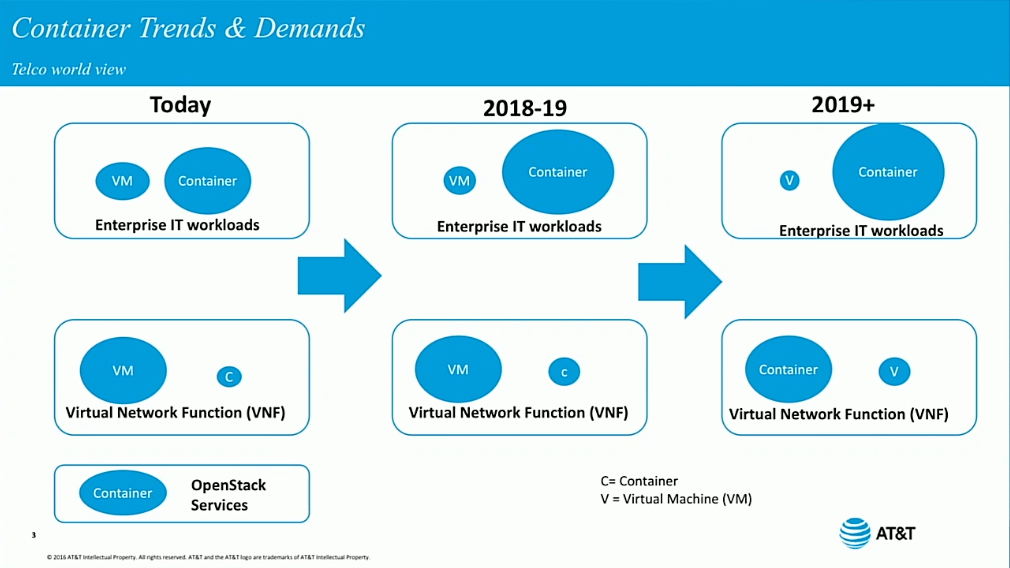
VNF is differ from Enterprise IT worklaod(4:19)
- VNF is not a simple VM
- Maintain a state
- Complex network configuration
- Sophisticated Storage Connectivity
- HA is important
2018-2019 vendor and open source project especially openstack should do something to meet the requirements.
Even it takes some time for container to replace VM for workload perspective, running the Openstack service as a container is possible today.
What AT&T expect from the container
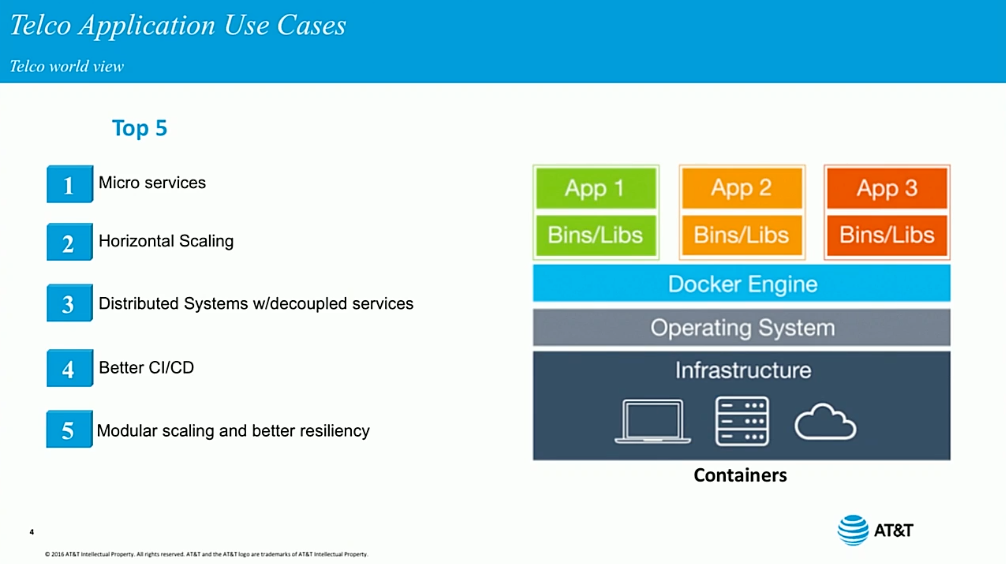
Better CI/CD means deploy Openstack more quickly with the help of container.
Combining OpenStack and Container
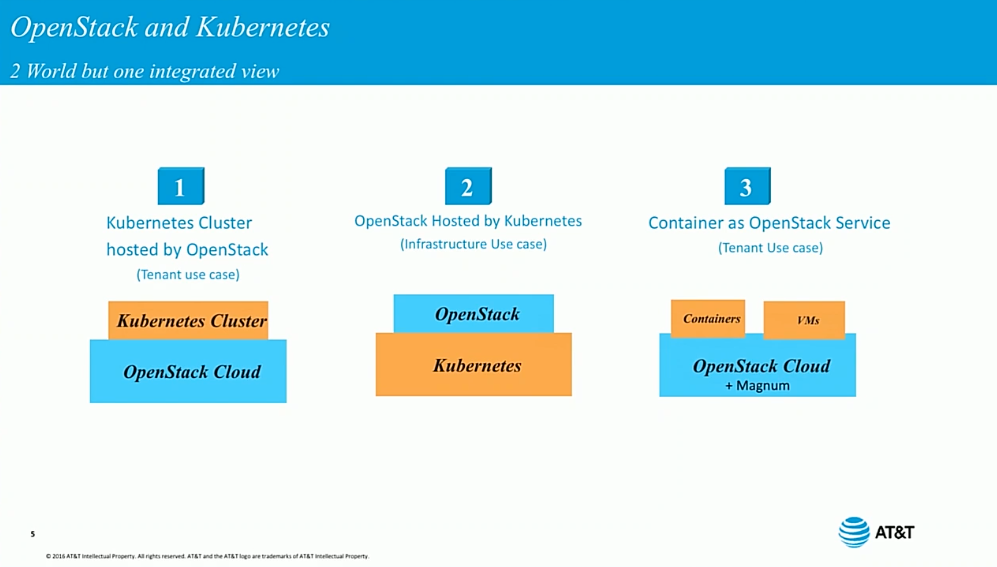
2nd option is what AT&T is highly interested. Magnum integrates containers and VMs

Openstack is another apps which can be contolled with orchestrator such k8s(right figure)
Openstack Helm1
Container Sandwidth
Runs Openstack services inside of the container and k8s governs them
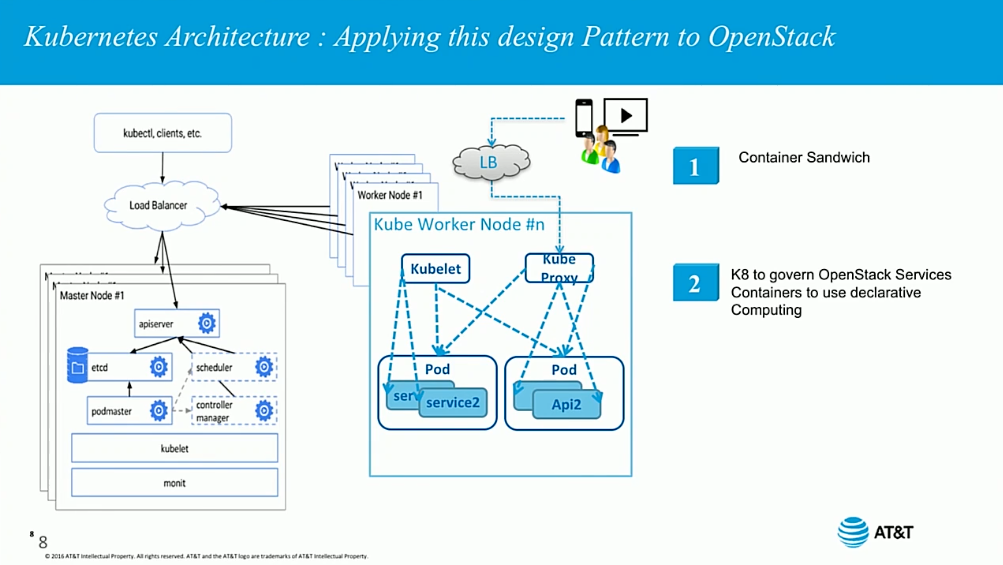
Several options

Explains option 2, running VM inside of the container(container runs on bare-metal)
Benefits of Openstack services inside of container
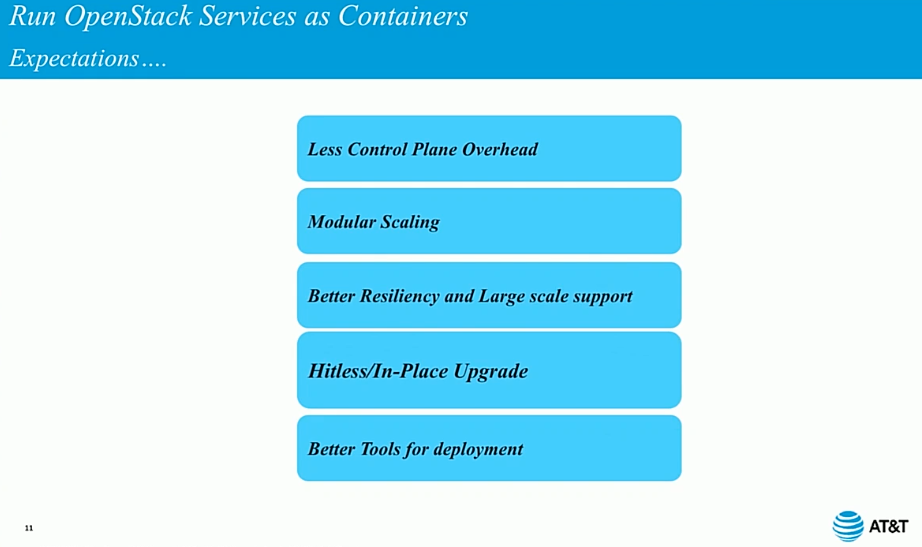
Modular scaling of specific OpenStack service such as more authentication can be supported with more keystone containers deployment.
Hitless/In-place upgrade means enabling upgrade of Openstack version without removing or rebooting VMs.
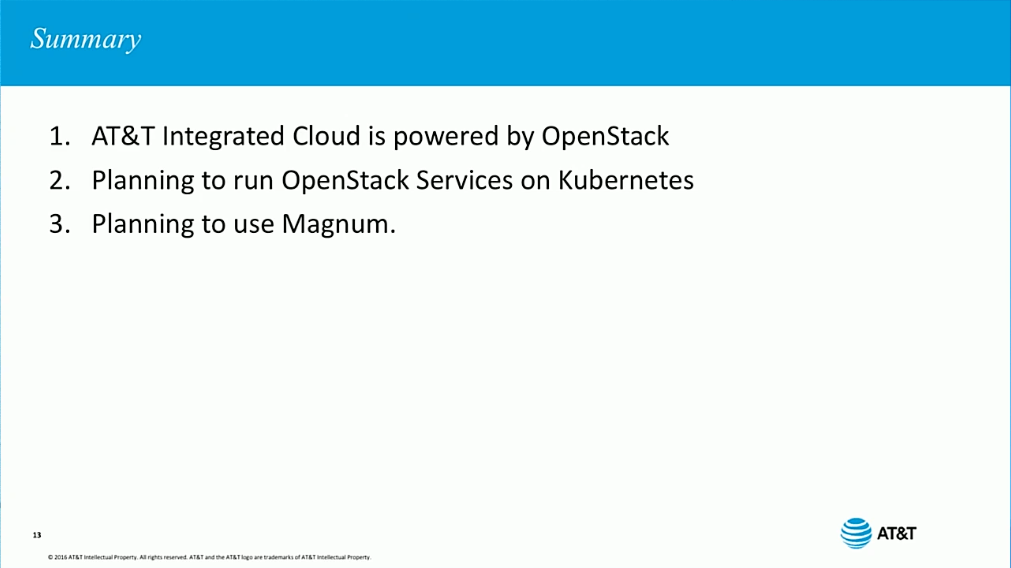
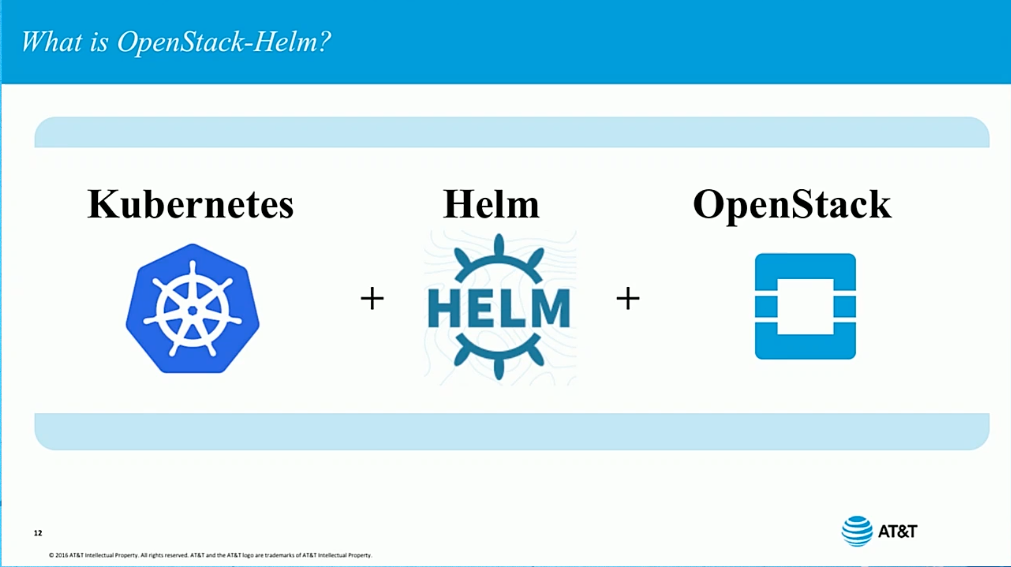
Q&A
Not clear for me. Why running Openstack service inside of the container has more security with a little performance penalty?
What makes NFV go slowly toward container?
Why K8s is chosen rather than the alternatives?
Presentation
The goal of OpenStack-Helm is to enable deployment, maintenance, and upgrading of loosely coupled OpenStack services and their dependencies individually or as part of complex environments. Information specific to OpenStack-Helm can be found below. http://openstack-helm.readthedocs.io/en/latest/ ↩︎